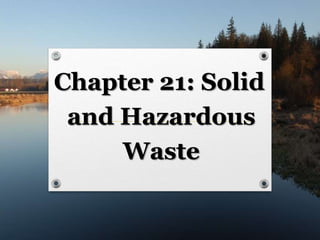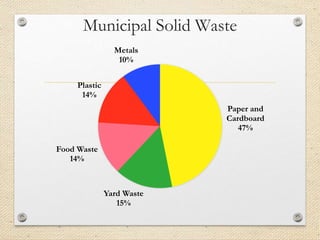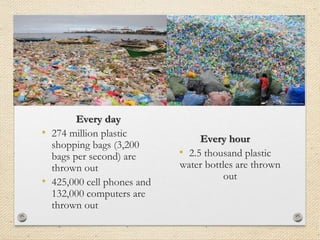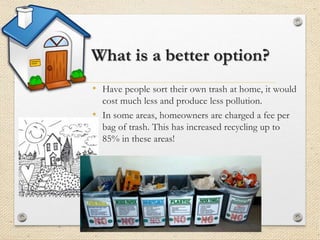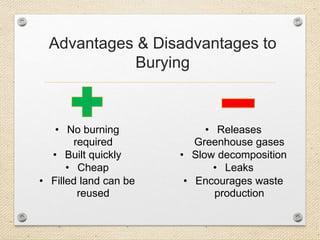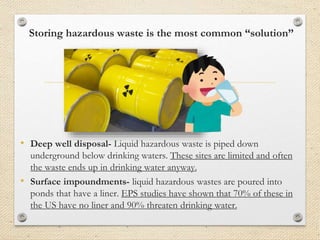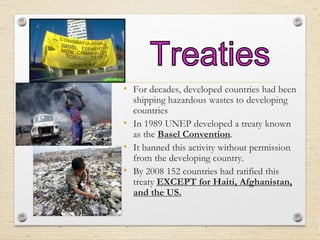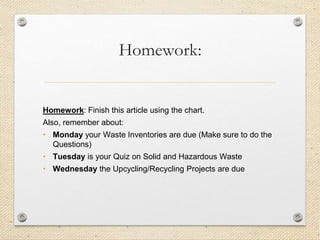This document discusses different types of solid waste and hazardous waste, as well as methods for handling waste. It begins by defining solid waste and hazardous waste. It then discusses the different types of industrial, municipal, and hazardous waste produced. The document also covers various methods for handling waste, including waste management through recycling and composting, as well as waste reduction through reuse and prevention strategies. It notes the environmental and economic impacts of different waste handling methods.
